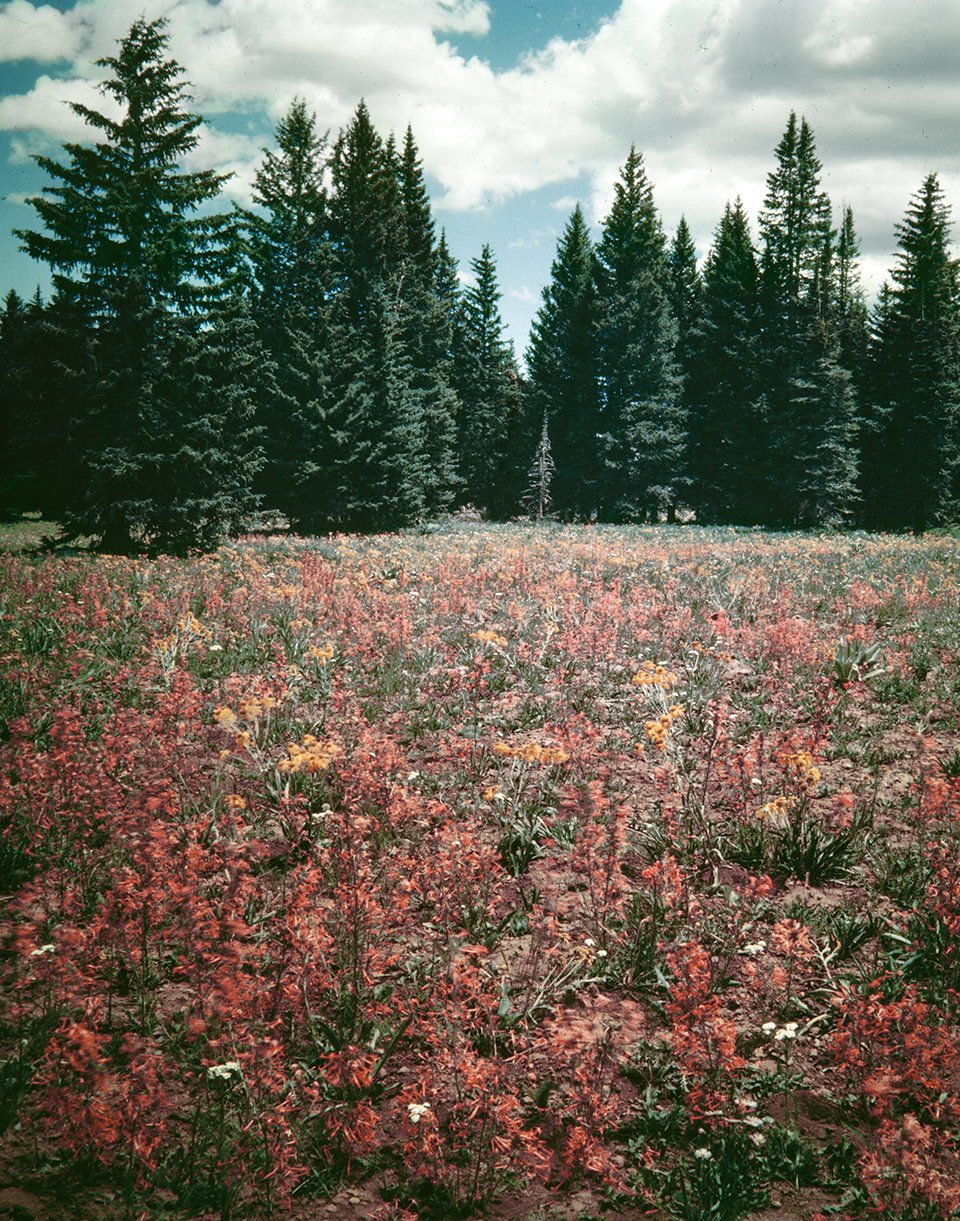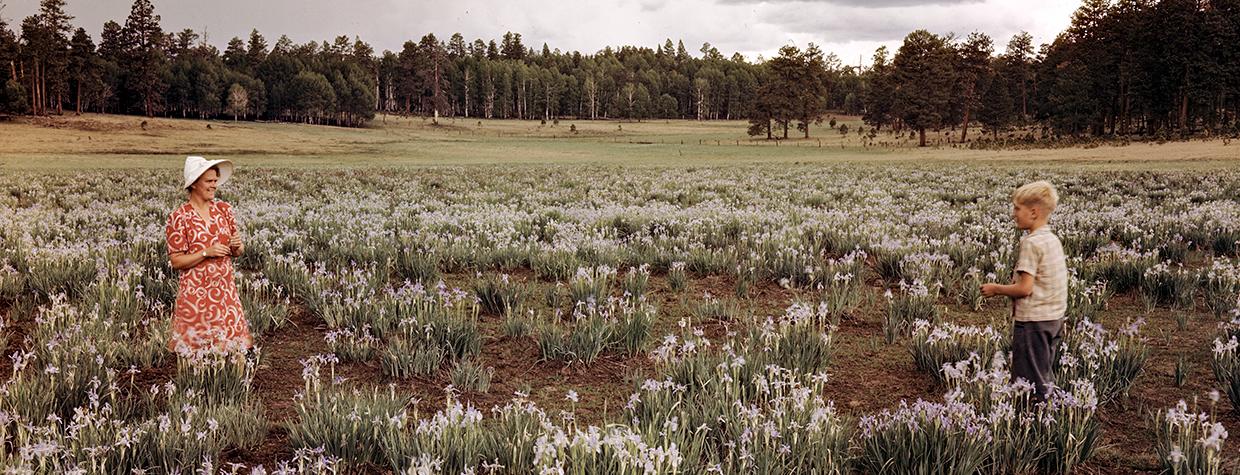I am no physician, but I do know that if anyone should come to me in need of a rest cure, I would have the name of an ideal place on the tip of my tongue.
“Go into the White Mountains of Arizona,” I should say.
Now to be thoroughly restful, a place must have space enough in which to stretch. The houses, or towns, if people insist upon having them, must be far enough apart to enable the traveler to forget one before he comes upon the next, and to indulge in some speculation as to whether the house of snug logs that showed from the last shining bend in the road presaged more or was alone, depending only on the smaller buildings nestled close by, for complete subsistence.
In the White Mountains, if you start your tour from Springerville and go, perhaps, to Clifton, you will find the places nicely spaced. Springerville itself is a self-sufficient little town and its people unusually friendly. We left it feeling that the blessing of the town was upon us. At breakfast, the kind folk were afraid we might not get enough to eat, and our conversation in one of the stores was as warm as though we did our weekly trading there. The eyes of the Pioneer Woman, standing in gray stone in the middle of the street, followed us out to the first bend in the road.
This is an old pathway long used by the white man. So the cure begins by playing on the human liking for old memories of things gone by. We follow here the Coronado Trail, which, we are reminded, that famous Spanish traveler once trod. Here, more easily than in most places in our country, or perhaps in any other country, can we forget the effects of man’s occupancy and see with our own eyes what Coronado and his men must have looked upon back in that far-off century.
After weary stretches of heartbreaking desert, what an oasis this must have seemed! Hills roll up in a never ending succession, as full of motion as the ocean itself. But these waves are carpeted with the green of leaves and ferns and trees. A warm and living carpet with its own movement. Vistas open now and again that permit the mind to grasp the size of these great lands, all within national forest or Indian reservation boundaries. Valleys that crowd upon the hills, and hills that swoop and lengthen into more valleys. And trees and trees and more trees. Big old alligator-barked junipers that may remember Coronado, and lithe aspens with their graceful, everlasting dance, aspens that follow where a fire has been, springing up to cover the naked wounds of the earth and make her forget the loss of her darker children, the pines and firs.
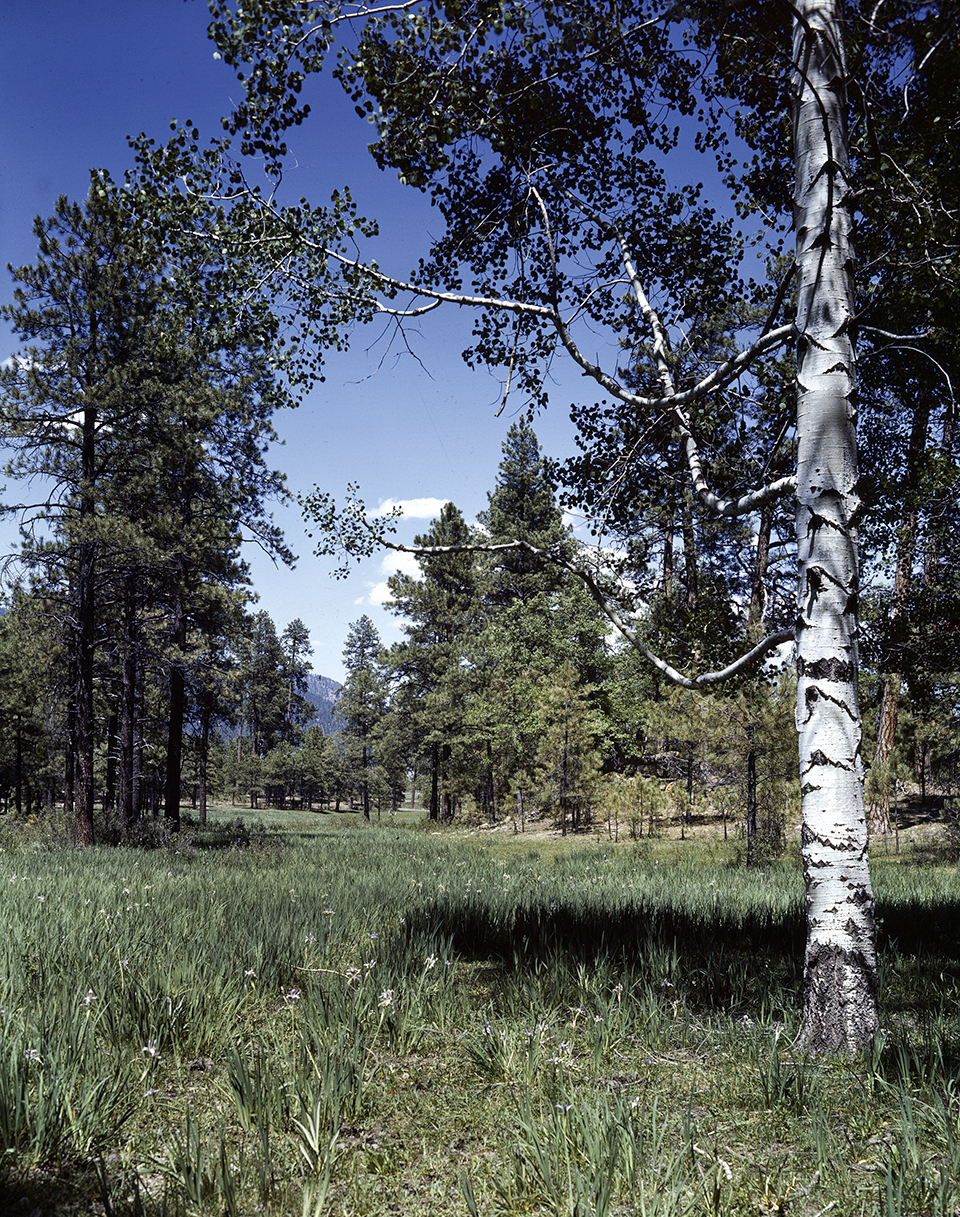
Now the trees give way to a meadow, and these meadows seem to have a power reminiscent of legendary poisons that robbed the victim of all desire to return to his home. For here is a perfection of peace, written in a living rhythm. In early June, wild iris flood the floors and overflow into the higher spots under the trees. Erect, delicately colored, they almost disappear from view when seen at certain angles.
Closer examination shows a host of other flowers and plants that are preparing for a later flowering. In a few more weeks the violets, blue, yellow, white, will take the place of the irises in the color scheme. In larger meadows, where the ground keeps marshy, there will be hundreds of white cowslips. In August and September, the roads will be bordered with cheery sunflowers, gold against the verdant green.
That is to mention only a beginning of the floral offering of these meadows. And the flowers themselves are only one part of their charm. Trees keep at a respectful distance, grouped gracefully and with an irregular line that looks artistic without ceasing to be casual. Here and there, baby aspens, already as fluttering as the parent trees, promise that the meadow will change shape in a few more years. August, September and even into October will run more changes in the pattern of security and peace and solitude. A short season, perhaps, but certainly a merry one.
Coronado missed a sight that adds the last perfect touch to this pastoral scene to be had at frequent turnings in the road, the rich brown and white of grazing cattle, or of idling horses, even the gray and black of nibbling burros, stationed near a fire warden’s cabin.
Such a place is Hannagan Meadow, with the cabin commanding a view of the broad meadow itself. There in a sturdy corral are several horses, saddled from seven in the morning until seven at night, ready for emergencies. But at night, the saddles off, the patient animals are let out onto the green to browse among the cowslips. They run a little, to see if they still can, and roll in the soft grass; then with frequent nudges and realistic “horse-play” go sauntering off to spend the cool night somewhere to their liking.
Nearby are cabins that can be rented and horses obtained for trips through this region. The Mogollon Rim, dividing the Crook and Apache National Forests, is a water divide and from its forested top the sportsmen can descend on either side, to the Blue River or to numerous other streams.
Another requisite of our rest cure must be that there shall be no need to rush from one spot to another. Here the meadows seem to pull one down upon their inviting green. I recall such a place which will always stay in my mind as the “Enchanted Meadow.” It was tucked away in the trees near Alpine, some 8,000 feet above sea level. The snow had been off the ground some two weeks and there was still a softness under foot. A tiny stream bounded the open space on one side, and had thrown up a wall of willows to render the seclusion more complete. Trees shut it in on the other three sides. Patches of iris responded to an errant breeze and tiny white violets rewarded the diligent searcher. Flowers that I did not know taunted me, and overhead the pines and aspens talked of higher things. It was impossible to resist the urge to take hands and dance upon the green.
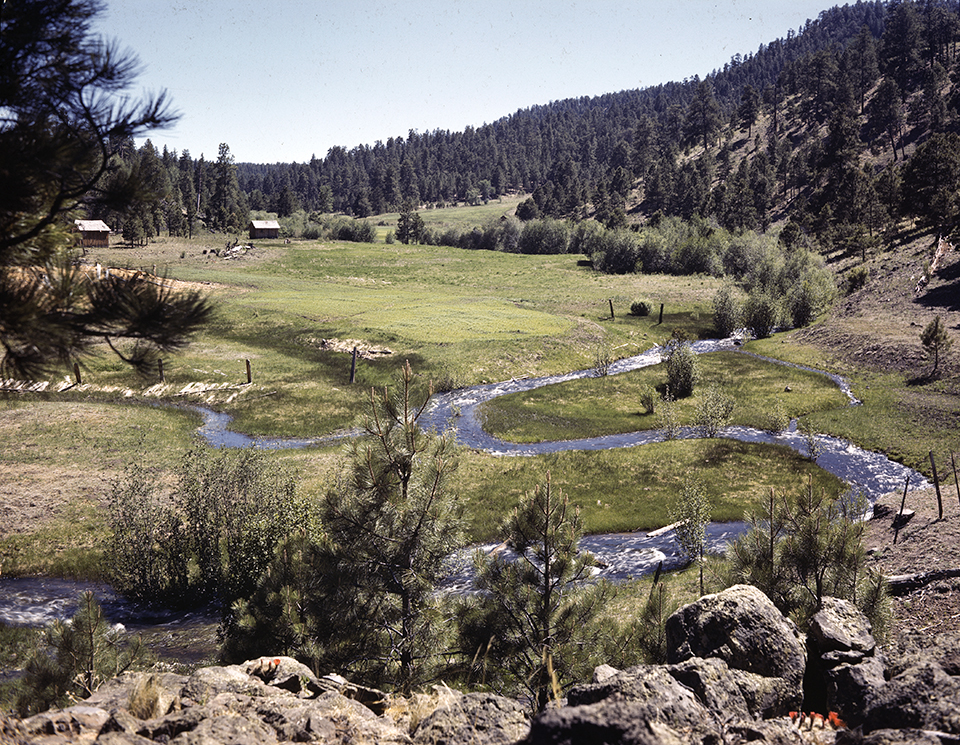
“One, two, three, and all fall down.”
Fauns or leprechauns waited our departure to come out from behind the trees. Three bold squirrels chased up and down a dead stump. And there was no war or thunder of cannon.
The meadows still hold me and try to keep me from wandering on to the rolling hills and beautiful pasture lands. But the weary mind, seeking new strength, needs to be able to look off far into the distance to be soothed and reassured. Like an enlarged park, like San Francisco’s Golden Gate Park, if it were spread over thousands of acres and then left to nature’s own gardening, are the rolling hills of the White Mountains. Crossing a small stream, perhaps half a mile away, there may be a herd of cattle, kept together and moving by the skill of several cowboys riding with the ease born of long practice. They are part and parcel of the scene, even as they move out of it, singing lustily to the tree tops or to the open spaces.
Eye specialists say that we suffer today from looking at things too closely. In this part of Arizona the horizons are pushed back and the eye follows their long contours with a pleasure that is restful and soul satisfying.
Water adds its note in streams and tumbling cascades and in sheets of smooth lakes. Big Lake, about 15 miles from Alpine, is a lovely place. Enlarged by man, it lies in the hollow between hills, with almost no trees along its immediate shore. Instead, they stand back at a distance, shading a delightful campground that always harbors at least a few fishermen and their families.
The Little Colorado begins in this region. Near the town of Greer, tiny bridges span it impudently, not reckoning nor ever knowing what a stream it will later become and through what deep canyons it will eventually run. Here the cows stand knee deep in it and the children throw pebbles to its clearly seen bottom. Greer sits back on its haunchlike hills, content to let the river run on.
Hall Creek, several miles farther on, in imitation of larger rivers, makes a double “S” curve that, seen in sky blue against its banks of emerald green, stays in the mind’s eye. We looked down upon it from a hill of volcanic rock, and saw nestled there, as a part of the picture, a great clump of one of the small barrel-cactuses decorated with a score of bright red blossoms.
These streams carry fish in their flashing waters and are patrolled by men with poles in hand, fishing, yes, but also drinking in the fresh sweet air and listening, if only with half an ear, to the shrill bluejay and the noisy canyon wren.
Still remembering our patient in search of peace, we demand that while the body and the soul find adequate refreshment, the mind, too, must be entertained and pleasantly occupied. So we look to the region for its history and con its place names for refreshment. A new book opens before us. There is, of course, the interesting Coronado Trail from Springerville to Clifton. Here, as we said, is a portion of that traveled gentleman’s probable itinerary. Perhaps the first white man to see its untold loveliness, now his name has its place in the folds of its green hills and is still echoed by its rocky cliffs. He was followed by hunters and trappers.
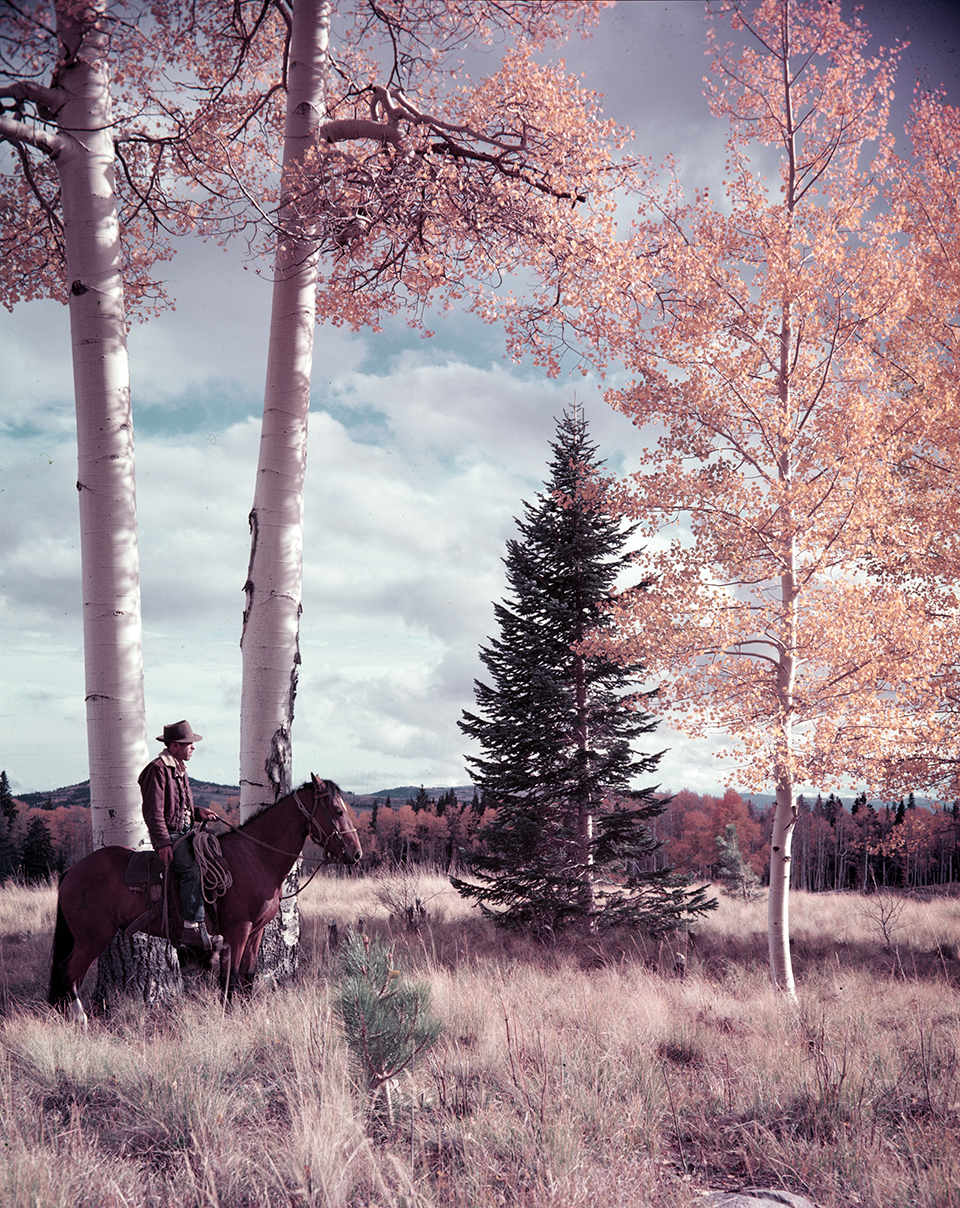
The name of the town Nutrioso comes from “nutria” meaning beaver, and “oso,” bear — bearing witness to the abundance in the vicinity of animals for fur trapping. Many of the homesteads and the lodges along the road have stuffed animals and carefully preserved furs of creatures shot in the White Mountains.
The sawmills, scattered as they are through the forests, point to another kind of man’s industry. There are no great sections of denuded timber lands here, for the trees have been selected for cutting and the young trees have been permitted to come up and replace the needed victims of the woodsman’s ax.
The Apache Indians need a chapter to themselves. They live now in increasing numbers on two great reservations, bringing to cattle raising and the improvement of their own condition, the same vigor that made them so fierce on the battlefield before they had reconciled themselves to the rule of the white man. In the heart of the Apache country is the ancient ruin of Kinishba, now partially restored by Dr. Byron Cummings.
The small towns between which the white road runs seem deeply rooted in the soil. Alpine rests securely in its hills, a small place but a memorable one. Whoever named it had a feeling for the European Alpine country. There are no towering peaks here for a background. The country culminates in Old Baldy (Thomas Peak), which at its elevation of 11,403 feet always shows some snow; but the rolling slopes, nestling farm houses, the fields of grain, and the surrounding forests are strikingly similar. Small sawmills may be seen near almost every settlement with engines chugging away and clouds of sawdust filling the air.
One of these is just outside of Nutrioso, and the naked flame may be seen through the cracks in a large metal cylinder, involved somehow in the process. This little town would delight any artist. At sunset, the cows come ambling down the street and make their way up a lane bordered by small buildings touched with the double magic of setting sun and the passage of years. The world is hushed and beauty lies in every hollow and on every hill.
Are you tired of the wheels that turn and turn, and of the train’s too insistent whistle? Do the shouts of people hurrying to and fro make you want to close your ears?
Then call time out and seek the White Mountains. They lie cool and green. And remember that whispering aspens must be approached closely to be heard. The noisiest brook of them all can’t bring its voice through the clamor of your city. Remote, tranquil, utterly beautiful, it awaits your approach. At your coming, the iris will open to the sun and the grazing cattle may lift lazy heads. The summer sound of bees among the flowers will fill the air. Here is rest and peace, and somehow the assurance that the world will go on. Builded slowly out of an inexhaustible earth, its dark trees and falling waters have a power of cure, and they assert anew the faith of ages.
I give you, for your pleasure, the White Mountains of Arizona!
